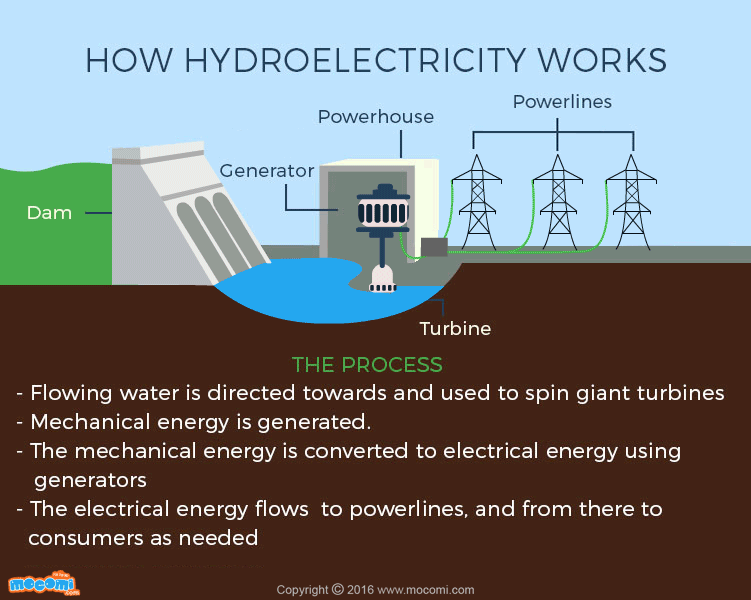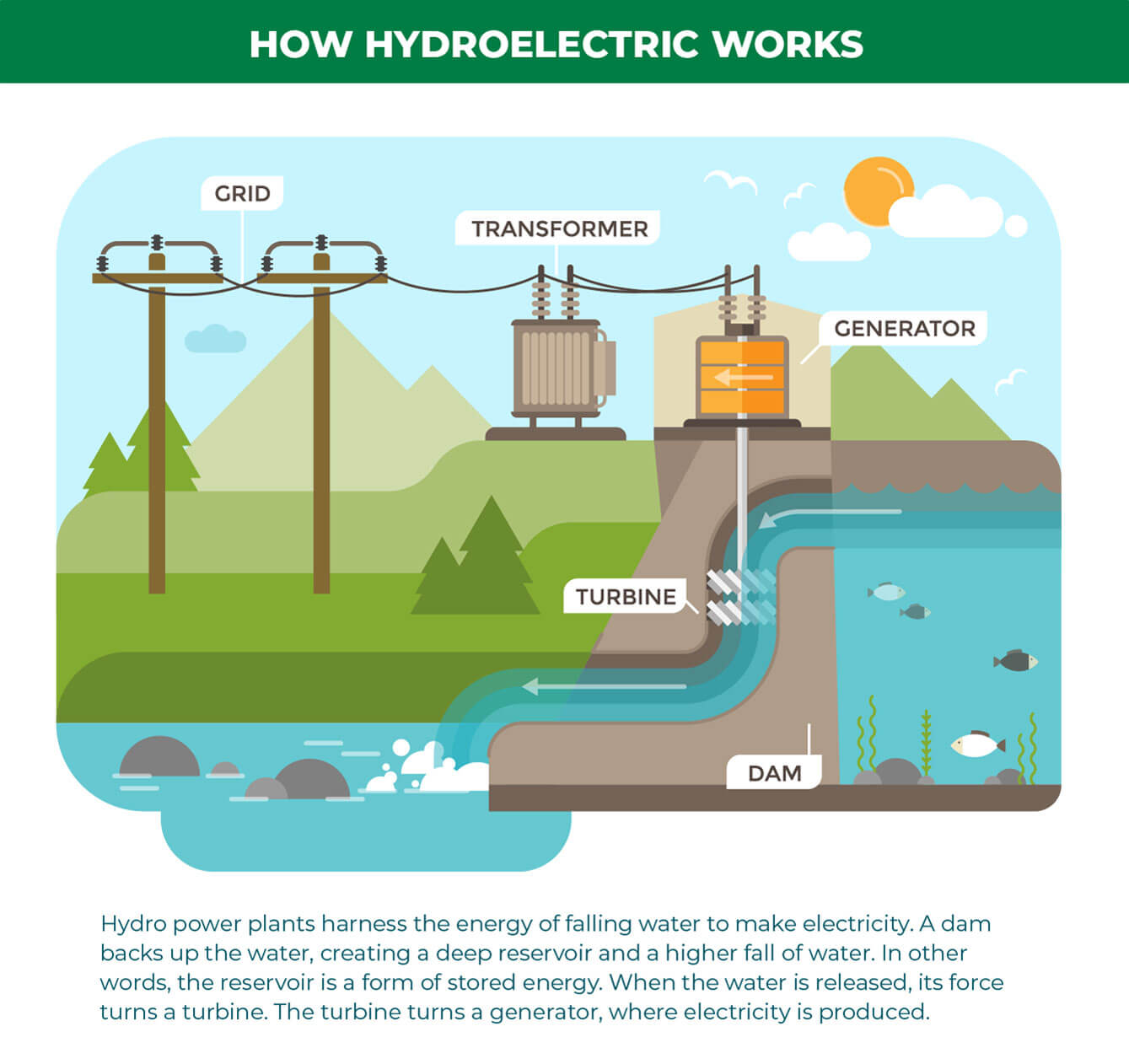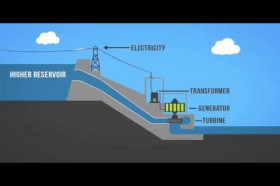Have you ever thought about harnessing the power of water to produce electricity right in your own home? It's a fascinating concept that’s gaining traction, especially with the advent of Dailymotion video tutorials that make it easier than ever. This blog post will guide you through the basics of water-based electricity generation, and you'll discover how simple and effective these methods can be. Whether you’re a DIY enthusiast or just curious about sustainable energy, you’ll find plenty of ideas to explore.
Understanding the Basics of Hydro Power

So, what exactly is hydro power? At its core, hydro power is the process of generating electricity from the movement of water. It relies on a fundamental principle: moving water can turn turbines, which then generate electricity. Volumes of water flowing in rivers or accumulating in reservoirs can be harnessed for this purpose. Let’s explore some key concepts to help you understand hydro power better.
- Types of Hydro Power: There are mainly three types of hydro power:
- Large-scale hydroelectric: Uses dams to store water and generate power.
- Small-scale hydroelectric: Generates energy suitable for homes and small communities.
- Pico hydro: Involves small turbines to produce energy from flowing water, perfect for individual households.
- The Components: A typical hydro power system consists of:
- Turbine: Converts kinetic energy of flowing water into mechanical energy.
- Generator: Converts mechanical energy into electrical energy.
- Control system: Manages the performance of the power system.
- Active Water Sources: Common sources include:
- Rivers
- Streams
- Waterfalls
- Reservoirs
In a nutshell, understanding these basics sets the foundation for effectively producing electricity from water. With the right resources and video tutorials available on platforms like Dailymotion, implementing hydro power in your home becomes an achievable goal.
Also Read This: How to Make Baby Dresses: Easy Crafting on Dailymotion
3. Benefits of Generating Electricity from Water

Generating electricity from water offers a myriad of benefits that can make it an attractive option for homeowners considering renewable energy solutions. Let’s dive into some of the key advantages:
- Eco-Friendly: Water-powered electricity generation is a sustainable and clean source of energy. Unlike fossil fuels, it doesn’t emit harmful pollutants that can damage our environment.
- Cost Savings: Once your hydro system is set up, you can potentially lower or eliminate your electricity bills. While initial costs may be associated with the setup, the long-term savings can be significant.
- Energy Independence: By generating your own electricity, you're less reliant on local power companies. This can provide peace of mind, especially during energy price fluctuations or outages.
- Low Maintenance: Hydro systems typically require minimal maintenance compared to other renewable energy systems like wind or solar. With proper installation, they can run efficiently with little oversight.
- Consistent Energy Source: While solar energy is dependent on sunlight and wind energy relies on gusts, water—whether from a stream, river, or even a plumbing system—can provide a reliable and consistent energy supply throughout the year.
- Community Resilience: By generating electricity locally, communities can become more resilient to energy shortages or price spikes, helping to create a more stable local economy.
With all these benefits in mind, it’s no wonder that more homeowners are exploring how to harness the power of water to meet their energy needs!
Also Read This: How to Make Crochet Flowers Step by Step: Detailed Tutorial on Dailymotion
4. Step-by-Step Guide to Setting Up a Hydroponic System

Setting up a hydroponic system can seem daunting at first, but with the right guidance, it can be a breeze! Here’s a simple step-by-step guide to get you started with your own hydroponic system to generate electricity from water.
- Research Your Hydroponic Method: There are different types of hydroponic systems such as Nutrient Film Technique (NFT), Deep Water Culture (DWC), and Ebb and Flow. Research which method suits your space and needs best.
- Gather Your Materials: You’ll need the following:
- Container or reservoir
- Growing medium (like clay pellets or rock wool)
- Nutrient solutions
- Water pump and air pump (for aeration)
- Net pots or planting cups
- Set Up Your Reservoir: Fill your container or reservoir with water and mix in the appropriate nutrient solution based on your chosen plants. Ensure the water levels are suitable for your hydroponic design.
- Install the Pump: Set up your water pump for circulating the solution through the system. Make sure your air pump is also installed for aeration if you're using a system that requires it.
- Add Seedlings or Seeds: Place your seedlings or seeds into the net pots filled with your chosen growing medium. Once they’re set up, position them over the reservoir where they can access the nutrient solution.
- Monitor and Maintain: Regularly check your water levels and nutrient concentration. Adjust as necessary, and keep an eye on plant health.
And voilà, you’re on your way to harnessing the power of water and growing your own food while potentially generating electricity! Remember, practice makes perfect, so don’t be discouraged by initial challenges.
Also Read This: The History and Significance of Forgotten Events on Dailymotion
Overview of Dailymotion Video Tutorials
When it comes to learning new skills, video tutorials can be incredibly helpful, and Dailymotion is a fantastic platform for just that! With a plethora of content creators sharing their expertise, you'll find countless videos dedicated to producing electricity from water. From the basics to more advanced concepts, these tutorials offer a step-by-step guide that's easy to follow.
One of the great things about Dailymotion is its diverse range of creators. You'll find tutorials made by hobbyists, engineers, and DIY enthusiasts, all sharing different perspectives and techniques. Some users might focus on simple, homemade solutions, while others may delve into more complex systems. This variety gives you various options to choose from based on your comfort level and available resources.
Many of the tutorials also include:
- Visual aids: Diagrams and visual demonstrations that clarify complex concepts.
- Tips and tricks: Creators often share their experiences, offering insights that can save you time and effort.
- Community feedback: Most videos have comment sections where viewers discuss difficulties, share successes, and provide additional tips.
With the convenience of watching on any device, you can pause, rewind, or replay sections that you find challenging. This interactive approach allows for a customized learning experience, making it easier to grasp concepts at your own pace. So dive into the world of Dailymotion tutorials and start your journey to harnessing the power of water to create electricity right at home!
Also Read This: How to Live Stream on Dailymotion: A Complete Tutorial
Tools and Equipment Needed for Your Project
Before you dive into producing electricity from water, it's essential to gather the right tools and equipment. The specific items you'll need can vary based on the method you choose, but here’s a general list to get you started:
| Tool/Equipment | Purpose |
|---|---|
| Water Wheel or Turbine | Converts kinetic energy from flowing water into mechanical energy. |
| Generator | Transforms mechanical energy into electrical energy. |
| Pipes and Hoses | Direct water flow to the turbine or wheel. |
| Battery | Stores the generated electricity for later use. |
| Voltage Regulator | Ensures a consistent voltage output for safety and efficiency. |
| Basic Hand Tools | For assembly and adjustments (e.g., screwdrivers, wrenches). |
It's also worth noting that you may need additional materials depending on your specific project setup. Local hardware stores often carry most of these items, and many can be found online as well. Don't forget to check out those Dailymotion tutorials for specific equipment recommendations and tips tailored to different methods of electricity production! With the right tools in hand, you'll be well-prepared to embark on your energy-producing adventure at home.
Also Read This: Has Rumble Been Shut Down? Exploring the Current Status of the Rumble Platform
7. Safety Precautions When Working with Water and Electricity
When it comes to producing electricity from water at home, safety should always be your number one priority. Combining electricity and water can be a recipe for disaster if not handled properly. So, here are some essential safety precautions to keep in mind:
- Keep Your Workspace Dry: Always ensure that your work area is dry. This means wiping up any spills immediately and avoiding working in damp conditions.
- Use Proper Insulation: All electrical connections should be insulated. Use waterproof materials to cover any connections that might be exposed to moisture.
- Ground Your Equipment: Make sure all your equipment is properly grounded. This prevents any stray electric current from causing harm.
- Use GFCI Outlets: Ground Fault Circuit Interrupter (GFCI) outlets are designed to shut off electricity when a ground fault is detected, making them perfect for wet environments.
- Wear Protective Gear: Don’t skip on safety gear like rubber gloves and non-slip footwear. They can help protect you from shocks and slips.
- Know the Shut-Off Locations: Familiarize yourself with where the main power shut-off is in your home, so you can quickly turn it off in case of an emergency.
- Work with a Partner: It’s always safer to have someone with you, especially when working with electricity. This way, help is readily available in case something goes wrong.
By following these precautions, you significantly reduce your risk while exploring the exciting world of generating electricity from water at home.
Also Read This: Mastering Monopoly Board Game with Dailymotion Video Lessons
8. Common Mistakes to Avoid
Diving into the DIY world of producing electricity from water can be incredibly rewarding, but there are pitfalls that beginners often encounter. Here’s a rundown of common mistakes to avoid:
- Skipping Research: One of the biggest blunders is not doing enough research. Each project can have unique challenges, so take the time to watch tutorials and read up on similar projects.
- Ignoring Manufacturer Instructions: Many enthusiasts overlook the importance of following the instructions provided with the equipment. These documents often contain crucial safety and operational details.
- Poor Planning: Failing to plan your project thoroughly can lead to wasted materials and time. Sketch out your ideas, gather necessary tools, and decide on a compatible location before starting.
- Neglecting Maintenance: Once your system is up and running, don’t forget about maintenance. Regular checks can prevent major issues down the line and keep your setup efficient.
- Overloading Circuits: It might be tempting to maximize your setup’s potential, but overloading circuits can result in serious damage or fires. Always adhere to electrical capacity guidelines.
By steering clear of these mistakes, you’ll set yourself up for a much smoother and safer experience in generating electricity from water at home!
Producing Electricity from Water at Home Through Dailymotion Video Tutorials
Producing electricity from water is an innovative and sustainable method that many homeowners are keen to explore. This approach often revolves around harnessing the kinetic energy of flowing water, primarily through hydroelectric systems. Dailymotion offers a plethora of video tutorials ranging from beginner to advanced levels, making this complex topic accessible for everyone interested in generating power at home.
Here are the different methods you can learn about through Dailymotion tutorials:
- Micro Hydroelectric Systems: Small-scale hydroelectric systems provide a feasible way to produce electricity using a water source, like a stream or river.
- Water Wheel Generators: Utilizing a traditional water wheel to convert fluid energy into electrical energy is an age-old technique rejuvenated through modern technology.
- Pico Hydro Systems: These compact systems can generate electricity with very low water flow, suitable for domestic use.
Moreover, the benefits of generating electricity from water are numerous:
| Advantage | Description |
|---|---|
| Eco-Friendly | Water energy is renewable and reduces carbon footprints. |
| Cost-Effective | Once set up, hydro systems often lead to significant savings on energy bills. |
| Energy Independence | Generating your electricity fosters self-sufficiency, reducing reliance on grid power. |
In conclusion, Dailymotion serves as a valuable resource for learning how to produce electricity from water at home. With the right guidance and commitment, you can transform water flow into a sustainable power source, contributing to both personal energy needs and broader ecological goals. Embrace the plethora of video tutorials available and take your first steps toward energy independence today!
 admin
admin








